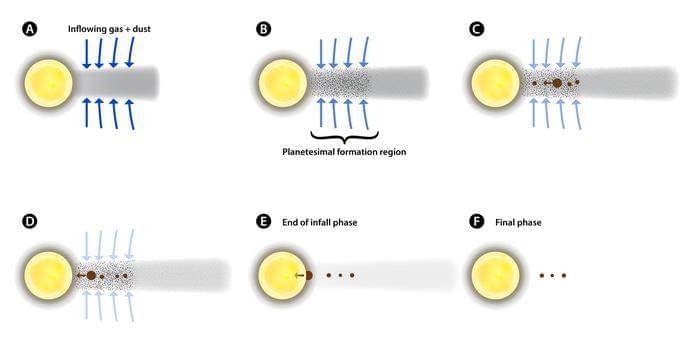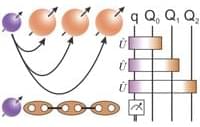Can AI really replace scientists? Robin, an AI system, identified a potential drug for vision loss, but scientists are skeptical of full research automation.


Can AI really replace scientists? Robin, an AI system, identified a potential drug for vision loss, but scientists are skeptical of full research automation.

What stage of a star’s life do planets start forming? This is what a recent study published in Nature Communications hopes to address as a pair of re | Space

What connection do solar farms have on property values? This is what a recent study published in the Proceedings of the National Academy of Sciences hopes | Technology

What steps can be taken to prepare certain communities for climate disasters, specifically with weather events becoming more frequent and severe? This is w | Earth And The Environment

No journal is perfect, and despite Nature being considered a high quality journal, I have recently come across a paper which is, to put it bluntly, is slop. It is a bit of slop easily debunkable by anyone who can do a tiny bit of linear algebra.
The paper is titled “Quantum theory based on real numbers can be experimentally falsified.” The entire paper is misleading because it presents a very specific representation of quantum mechanics based solely on real numbers, shows that it leads to different predictions than traditional quantum theory, and then concludes therefore complex numbers are a necessity for complex theory.
This is obviously false. A complex number is just two real numbers stitched together. Classical computers can’t operate on complex numbers and so they just break them apart into two real floating point numbers and do the equivalent calculations in that form, but then display it as a complex number, and they can reproduce anything you can reproduce using complex numbers. Indeed, my quantum computer simulator I had put together myself uses its own complex matrix library for linear algebra, and each element of the matrix is specified by two real numbers.

Dark matter constitutes about 27% of the universe, yet it remains one of the greatest mysteries in cosmology. Unlike normal matter, it does not emit, absorb, or reflect light, making it invisible and detectable only through its gravitational effects. Understanding dark matter is crucial for explaining galaxy formation and cosmic structure.
Accounting for approximately 68% of the universe, dark energy is a hypothetical form of energy proposed to explain the accelerated expansion of the universe. Its nature and properties remain unclear. Dark energy challenges our understanding of gravity and the ultimate fate of the cosmos.
Black holes are regions with a gravitational pull so strong that nothing, not even light, can escape. While we have theories describing their behavior, their interiors remain shrouded in mystery. The existence of black holes challenges the boundaries of our understanding of physics, including general relativity and quantum mechanics.

About a century ago, scientists were struggling to reconcile what seemed a contradiction in Albert Einstein’s theory of general relativity.
Published in 1915, and already widely accepted worldwide by physicists and mathematicians, the theory assumed the Universe was static – unchanging, unmoving and immutable. In short, Einstein believed the size and shape of the Universe today was, more or less, the same size and shape it had always been.
But when astronomers looked into the night sky at faraway galaxies with powerful telescopes, they saw hints the Universe was anything but that. These new observations suggested the opposite – that it was, instead, expanding.

Dr. Eric Topol, a 70-year-old cardiologist, challenges conventional aging perceptions by embracing strength training. Abandoning cardio, he discovered that building muscle mass significantly improves health span. His regimen of simple exercises at home led to increased strength, balance, mental focus, and confidence, proving that aging can be a period of renewal, not decline.

Qutrits are used to efficiently encode and process quantum information in a symmetry-protected topological phase, reducing both the physical resources and the number of gates compared to a qubit implementation.

The technique simulates elastic objects for animation and other applications, with improved reliability compared to other methods. In comparison, many existing simulation techniques can produce elastic animations that become erratic or sluggish or can even break down entirely.
To achieve this improvement, the MIT researchers uncovered a hidden mathematical structure in equations that capture how elastic materials deform on a computer. By leveraging this property, known as convexity, they designed a method that consistently produces accurate, physically faithful simulations.